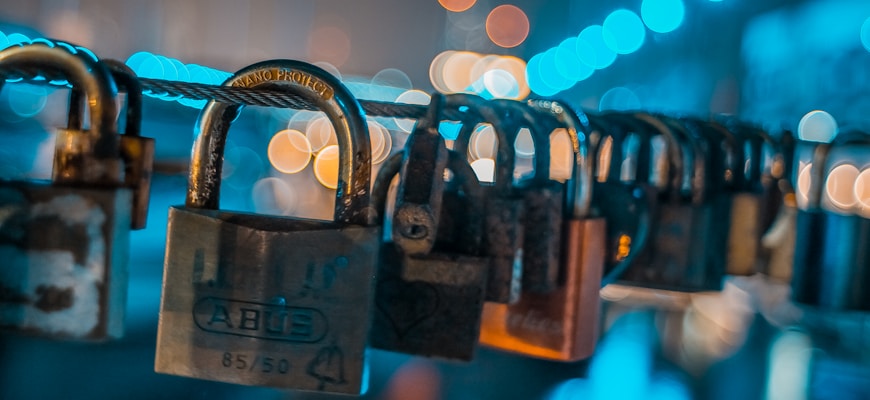Blockchain and Cybersecurity: Enhancing Data Protection

- Understanding Blockchain Technology
- The Role of Blockchain in Cybersecurity
- Challenges of Data Protection in the Digital Age
- Implementing Blockchain for Secure Transactions
- Emerging Trends in Blockchain Security
- Collaboration between Blockchain and Cybersecurity
Understanding Blockchain Technology
Blockchain technology is a decentralized and distributed ledger that records transactions across a network of computers. This technology creates a secure and transparent system for storing and sharing data. By using cryptographic techniques, blockchain ensures that data is tamper-proof and cannot be altered without consensus from the network participants. This makes blockchain an ideal solution for enhancing data protection and cybersecurity measures.
One of the key advantages of blockchain technology is its immutability, meaning that once a transaction is recorded on the blockchain, it cannot be changed or deleted. This feature provides a high level of data integrity and prevents unauthorized access to sensitive information. Additionally, the decentralized nature of blockchain means that there is no single point of failure, making it more resilient to cyber attacks.
Blockchain technology also utilizes smart contracts, which are self-executing contracts with the terms of the agreement directly written into the code. Smart contracts help automate processes and eliminate the need for intermediaries, reducing the risk of human error or fraud. This can improve the overall security of transactions and data exchanges.
In the context of cybersecurity, blockchain can be used to secure sensitive information such as personal data, financial transactions, and intellectual property. By implementing blockchain technology, organizations can enhance their data protection measures and mitigate the risks of data breaches and cyber attacks. As the digital landscape continues to evolve, blockchain technology offers a promising solution for improving cybersecurity practices and safeguarding valuable data assets.
The Role of Blockchain in Cybersecurity
Blockchain technology plays a crucial role in enhancing cybersecurity measures to protect sensitive data from cyber threats. By utilizing decentralized and immutable ledgers, blockchain provides a secure and transparent method for storing and managing data. This technology has the potential to revolutionize the way organizations approach cybersecurity, making it more robust and resilient against attacks.
One of the key advantages of using blockchain for cybersecurity is its ability to prevent unauthorized access to data through its cryptographic algorithms. Each block in the blockchain is linked to the previous one, creating a chain of blocks that are resistant to tampering or modification. This ensures the integrity and authenticity of the data, making it nearly impossible for hackers to compromise sensitive information.
Moreover, blockchain technology eliminates the need for intermediaries in data transactions, reducing the risk of data breaches and cyber attacks. By decentralizing the storage and management of data, blockchain enhances data security by distributing information across a network of nodes, making it more difficult for hackers to infiltrate and steal data.
Challenges of Data Protection in the Digital Age
One of the key challenges facing data protection in the digital age is the increasing sophistication of cyber threats. As more and more data is being stored and transferred online, cybercriminals are finding new ways to breach security measures and steal sensitive information. This poses a significant risk to individuals and organizations alike, as a data breach can result in financial loss, reputational damage, and legal consequences.
Another challenge is the lack of transparency and accountability in data handling practices. Many companies collect and process data without adequately informing users about how their information is being used. This lack of transparency can erode trust between businesses and consumers, leading to a breakdown in the relationship and potential legal issues.
Furthermore, the global nature of data transfers complicates data protection efforts. With data being stored in multiple locations around the world, it can be difficult to ensure that it is being adequately protected at all times. This is especially true in the case of cross-border data transfers, where different countries may have varying data protection laws and regulations.
In addition, the rapid pace of technological advancement presents a challenge for data protection efforts. As new technologies emerge, such as the Internet of Things (IoT) and artificial intelligence (AI), new security vulnerabilities are also introduced. It is essential for organizations to stay ahead of these developments and continuously update their security measures to protect against potential threats.
Implementing Blockchain for Secure Transactions
Implementing Blockchain technology can significantly enhance the security of transactions in the digital realm. By using a decentralized and distributed ledger system, Blockchain ensures that data is secure, transparent, and tamper-proof. This makes it an ideal solution for safeguarding sensitive information and preventing unauthorized access.
One of the key features of Blockchain is its ability to create a secure and immutable record of transactions. Each block in the chain contains a cryptographic hash of the previous block, making it extremely difficult for hackers to alter the data. This level of security is crucial in today’s digital landscape, where cyber threats are constantly evolving and becoming more sophisticated.
Furthermore, Blockchain technology utilizes consensus algorithms such as Proof of Work or Proof of Stake to validate transactions. This consensus mechanism ensures that all participants in the network agree on the validity of transactions, further enhancing security and trust. By eliminating the need for a central authority, Blockchain reduces the risk of fraud and manipulation.
Overall, implementing Blockchain for secure transactions can revolutionize the way we conduct business online. Its decentralized nature, cryptographic security, and consensus mechanisms make it a powerful tool for enhancing data protection and cybersecurity. As organizations continue to face cyber threats, adopting Blockchain technology can provide a much-needed layer of defense against malicious actors.
Emerging Trends in Blockchain Security
Blockchain security is a crucial aspect of data protection in the digital age. As technology evolves, emerging trends in blockchain security are continuously being developed to enhance the overall security of blockchain networks. These trends play a vital role in safeguarding sensitive information and preventing cyber threats from compromising the integrity of the data stored on the blockchain.
One of the key emerging trends in blockchain security is the use of multi-factor authentication (MFA) to verify user identities. By requiring multiple forms of verification, such as passwords, biometrics, or security tokens, MFA adds an extra layer of security to blockchain networks. This helps prevent unauthorized access and protects against identity theft and other malicious activities.
Another important trend in blockchain security is the implementation of advanced encryption techniques to secure data stored on the blockchain. Encryption helps to scramble data in such a way that only authorized parties with the decryption key can access and read the information. This ensures that sensitive data remains confidential and is not vulnerable to unauthorized access or tampering.
Furthermore, the use of smart contracts is another emerging trend in blockchain security. Smart contracts are self-executing contracts with the terms of the agreement directly written into the code. By automating the execution of contracts on the blockchain, smart contracts reduce the risk of fraud and ensure that transactions are conducted securely and transparently.
Overall, emerging trends in blockchain security are continuously evolving to keep pace with the ever-changing landscape of cybersecurity threats. By implementing these trends, organizations can enhance the security of their blockchain networks and protect sensitive data from unauthorized access and malicious activities.
Collaboration between Blockchain and Cybersecurity
Blockchain technology and cybersecurity are increasingly collaborating to enhance data protection in various industries. This collaboration leverages the inherent security features of blockchain to strengthen cybersecurity measures and protect sensitive information from unauthorized access and cyber threats.
One key way in which blockchain and cybersecurity work together is through the use of encryption techniques. Blockchain’s decentralized and immutable nature makes it a secure platform for storing encrypted data. By encrypting data before storing it on the blockchain, organizations can ensure that only authorized parties with the correct decryption keys can access the information.
Moreover, blockchain technology can also be used to enhance cybersecurity through the implementation of smart contracts. Smart contracts are self-executing contracts with the terms of the agreement directly written into code. By using smart contracts on the blockchain, organizations can automate security protocols and ensure that data access is restricted to only those who have the proper authorization.
Another important aspect of the collaboration between blockchain and cybersecurity is the use of decentralized identity management systems. Blockchain provides a secure and tamper-proof platform for storing digital identities, reducing the risk of identity theft and unauthorized access to sensitive information. Decentralized identity management systems enable users to have more control over their personal data and share it securely with authorized parties.
Overall, the collaboration between blockchain and cybersecurity is essential for enhancing data protection in today’s digital age. By leveraging the security features of blockchain technology and implementing robust cybersecurity measures, organizations can mitigate the risks of data breaches, cyber attacks, and other security threats, ultimately safeguarding their sensitive information and maintaining the trust of their customers.



